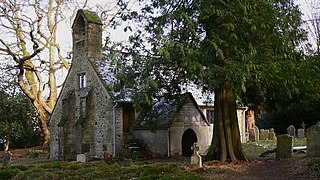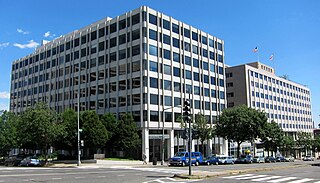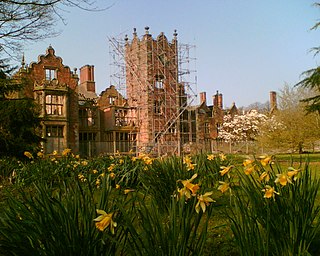
The National Trust for Historic Preservation is a privately funded, nonprofit organization based in Washington, D.C., that works in the field of historic preservation in the United States. The member-supported organization was founded in 1949 by congressional charter to support the preservation of America’s diverse historic buildings, neighborhoods, and heritage through its programs, resources, and advocacy.

The Friends of Friendless Churches is a registered charity formed in 1957 and active in England and Wales. It campaigns for and rescues redundant historic churches threatened by demolition, decay, or inappropriate conversion. To that end, as of September 2018, it owns 51 former churches or chapels, 26 of which are in England, and 25 in Wales.
The National Trust for Canada, is a registered charity with the mandate to inspire and lead action to save historic places, and promote the care and wise use of our historic environment. Its sites, projects and programs enhance community and quality of life and inspire Canadians to identify, conserve, use, celebrate and value their heritage buildings, landscapes, natural areas and communities for present and future generations. Established in 1973, it has campaigned to update and fill gaps in Canadian heritage policies and laws, including supporting legislation such as Heritage Lighthouse Protection Act. The National Trust for Canada also awards municipalities for their actions in preserving historical built environments through the Prince of Wales Prize for Municipal Heritage Leadership.

Diseworth is a village in the English county of Leicestershire. It is south of East Midlands Airport and off Junction 23A of the M1 motorway.

The Georgia Trust for Historic Preservation is the country's largest statewide, nonprofit preservation organization with more than 8,000 members. Founded in 1973, the Trust is committed to preserving and enhancing Georgia's communities and their diverse historic resources for the education and enjoyment of all.

The Churches Conservation Trust is a registered UK charity whose purpose is to protect historic churches at risk in England. In practice, the Trust works to prevent any deterioration in the condition of the buildings in its care and to ensure they are in use as community assets. Local communities are encouraged to use them for activities and events and the buildings provide an educational resource, allowing children and young people to study history, architecture and other subjects.

The Bath Preservation Trust is a charity that is based in Bath, Somerset, England, which exists to safeguard for the public benefit the historic character and amenities of the city, a UNESCO World Heritage Site, and its environs. The Trust is independent, funded by public membership, grants, donations and income from four museums that it operates in Bath: No. 1 Royal Crescent, the Museum of Bath Architecture, Beckford's Tower, and the Herschel Museum of Astronomy.
Marcus Binney, CBE is a British architectural historian and author. He is best known for his conservation work regarding Britain's heritage.
Heritage Trust for the North West / Heritage Trust North West is a registered Building Preservation Trust, established in 1978 as a charity and company.

The South Congregational Church is a former Congregational and United Church of Christ church building complex located on the intersection of Court and President Streets in Carroll Gardens, Brooklyn, New York City. The complex consisting of a church, original chapel, ladies parlour and rectory was landmarked by the Landmarks Preservation Commission on March 23, 1983. It was listed on the National Register of Historic Places in 1982.

The Historic Chapels Trust is a British Registered Charity set up to care for redundant non-Anglican churches, chapels, and places of worship in England. To date, its holdings encompass various nonconformist Christian denominations and Roman Catholic sites.

Westgate Methodist Chapel stands on the A689 road in the village of Westgate, some 5 miles (8 km) west of Stanhope, County Durham, England. It is a redundant chapel under the care of the Historic Chapels Trust, and is recorded in the National Heritage List for England as a designated Grade II* listed building.

Wallasey Memorial Unitarian Church is a redundant church in Manor Road, Liscard, Wallasey, Wirral, Merseyside, England. It is recorded in the National Heritage List for England as a designated Grade II* listed building, and is under the care of the Historic Chapels Trust.

Tuxlith Chapel, also known as Milland Old Church, is a redundant Anglican church in the village of Milland, West Sussex, England. It is recorded in the National Heritage List for England as a designated Grade II listed building, and is under the care of the Friends of Friendless Churches.

The Welsh Presbyterian Church is a disused church on Princes Road in the Toxteth district of Liverpool, Merseyside, England. It is a redundant church of the Presbyterian Church of Wales, and is recorded in the National Heritage List for England as a designated Grade II listed building. Because of its tall steeple, the church has been nicknamed the "Welsh Cathedral", or "Toxteth Cathedral", although it was never an actual cathedral.

The Scottish Redundant Churches Trust is a registered charity founded in 1996 which looks after Scottish churches which are of outstanding historic or architectural significance but are no longer used for regular worship. The Trust receives funding from Historic Scotland and public donations. Funding for restoration of churches in Trust ownership is received from the Heritage Lottery Fund, Historic Scotland, the Listed Places of Worship Grant Scheme, the Scottish Churches Architectural Heritage Trust, and other trusts and public donations.
The National Trust and English Heritage are the best known building conservation trusts in the United Kingdom for the protection of listed buildings and buildings of architectural importance. The Churches Conservation Trust, which was initially known as the Redundant Churches Fund, is a UK charity whose purpose is to protect historic churches at risk, those that have been made redundant by the Church of England. The Landmark Trust is a British building conservation charity, founded in 1965 by Sir John and Lady Smith, that rescues buildings of historic interest or architectural merit and then makes them available for holiday rental. There are many buildings within the United Kingdom that are not under the care of any of the aforementioned trusts but are recognised for their importance by local conservation and preservation groups. These groups are listed below:

The National Churches Trust, formerly the Historic Churches Preservation Trust, is a British registered charity whose aim is to "promote and support church buildings of historic, architectural and community value across the UK". It carries out this aim by providing financial grants to repair and modernise church buildings, supporting projects to enable churches to remain open, collaborating with local Churches Trusts and volunteer bodies, providing practical advice, support and information, and working to promote public awareness of the needs of churches. Its forerunner was the Historic Churches Preservation Trust, whose functions it has taken over, together with those of the Incorporated Church Building Society.

St John the Evangelist's Church is in the village of Crawshawbooth, near Rawtenstall, Lancashire, England. It is a redundant Anglican parish church formerly in the deanery of Rossendale, the archdeaconry of Bolton, and the diocese of Manchester. Its benefice has been united with that of St Mary and All Saints, Goodshaw. The church is recorded in the National Heritage List for England as a designated Grade II* listed building.



























